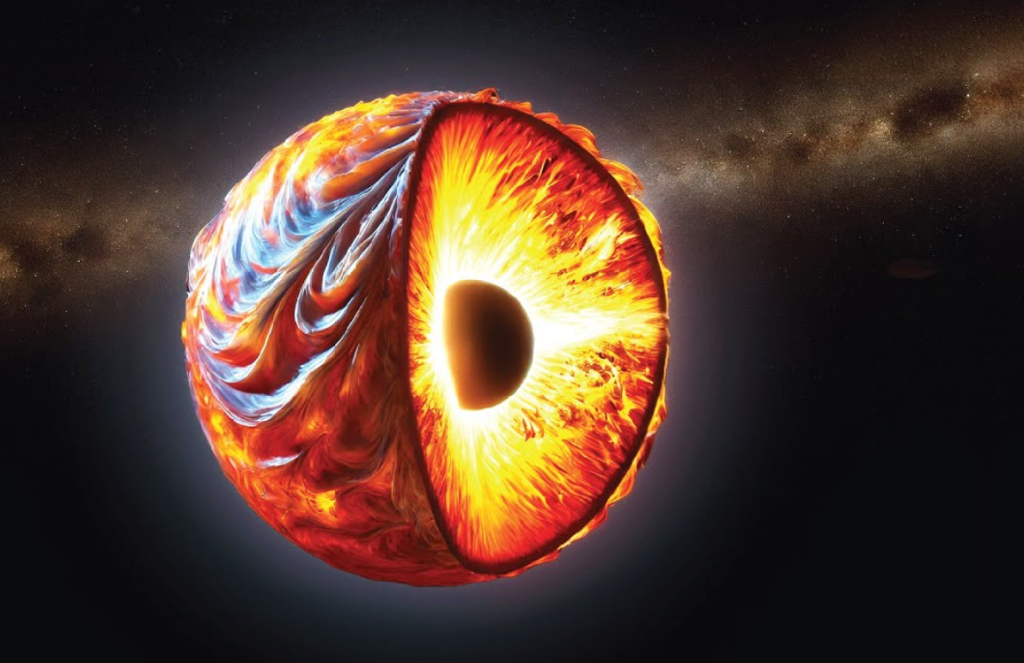Our sun, with its radius of 700,000 km, is already considered massive by today’s standards. But imagine a star up to 10 billion kilometers across—14,000 times larger than the sun! These stars, known as quasi-stars, were some of the most massive and powerful stars to have ever existed in the early universe. Not only were they enormous, but they also contained a black hole at their core. These massive stars played a crucial role in the creation of supermassive black holes, which are essential for the formation and evolution of galaxies, including our very own Milky Way.

A quasi-star consists of a vast outer shell of gas, many times more massive than the sun. At its heart lies a black hole, which continuously consumes the star’s material. As the black hole pulls in matter, it releases an incredible amount of energy, making the star shine brightly and powerfully. This process prevents the outer layers of the star from collapsing in on itself, keeping it stable despite its massive size. It’s as if a black hole is powering the star from the inside out, forming a delicate balance of forces.
To understand how these giants form, we look back to the early universe, just a few hundred million years after the Big Bang. Quasi-stars are thought to emerge from the collapse of massive primordial gas clouds, made mostly of hydrogen and helium. As these clouds collapse, they form supermassive stars—sometimes up to a thousand times the mass of our sun. When the core of these stars reaches a critical point, it collapses into a black hole, setting the stage for the formation of a quasi-star.
Interestingly, instead of exploding like many other massive stars in a supernova, quasi-stars pull in their outer layers, feeding the black hole at their center. This creates a massive shell of gas that continues to feed the black hole, resulting in immense energy production and the creation of one of the brightest objects in the universe—up to a billion times more luminous than the sun!
However, despite their immense size and power, quasi-stars have relatively short lifespans, lasting only a few million years. The black hole at the core consumes material at an astonishing rate, causing the star’s evolution to speed up. Eventually, the star cannot maintain its structure, and the outer layers collapse into the black hole, marking the end of the quasi-star’s life.
Through their short yet intense lives, quasi-stars are thought to contribute to the creation of supermassive black holes—key components of galaxy formation. While no quasi-star has been directly observed, scientific theories and computer simulations have given researchers valuable insights into these ancient cosmic giants. Studying quasi-stars helps scientists understand how the first supermassive black holes formed and how galaxies evolved.
Though quasi-stars are purely theoretical at this point, they are key to understanding the earliest stages of the universe. As researchers continue to study these fascinating stars, we get closer to unlocking the mysteries of our cosmic origins.